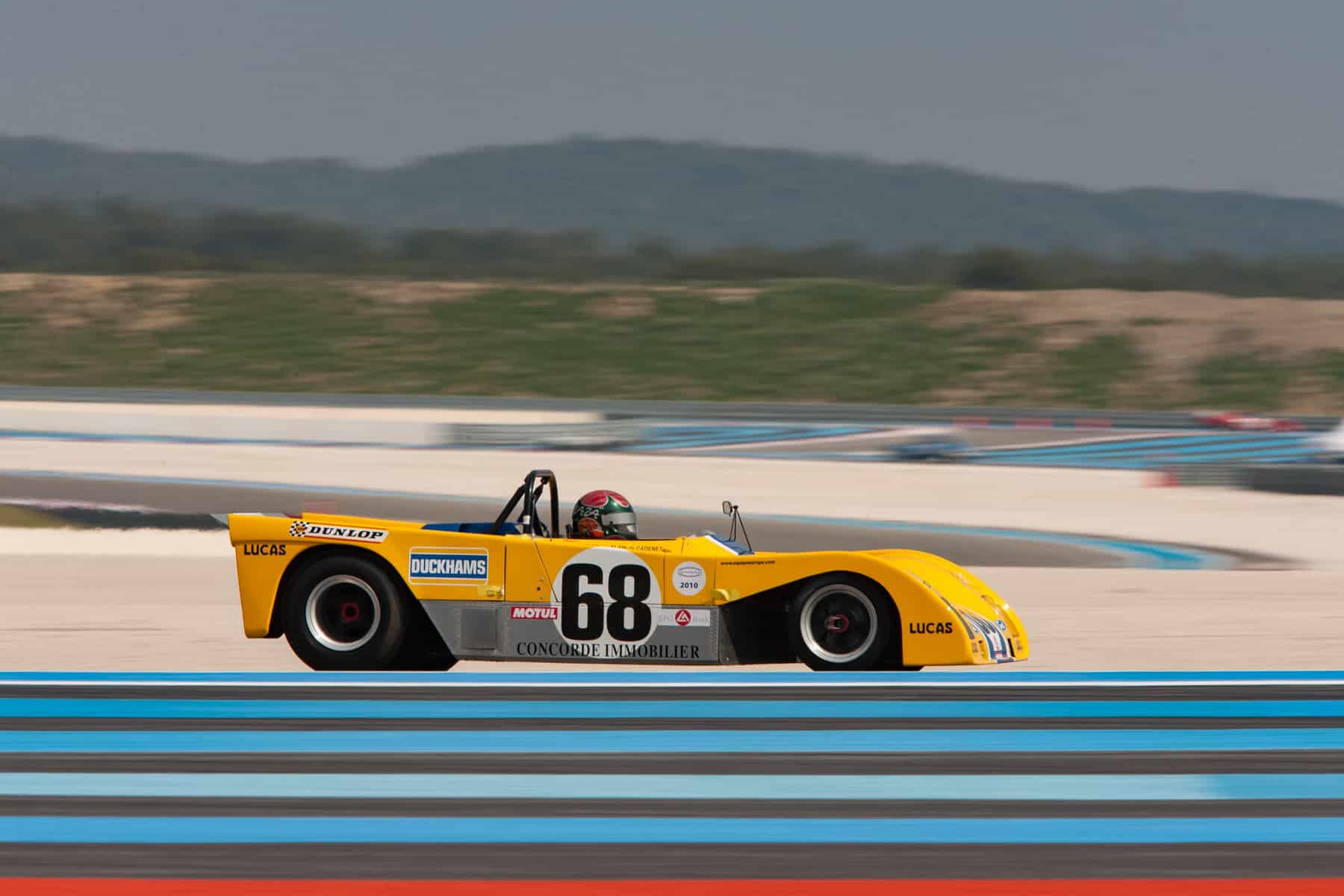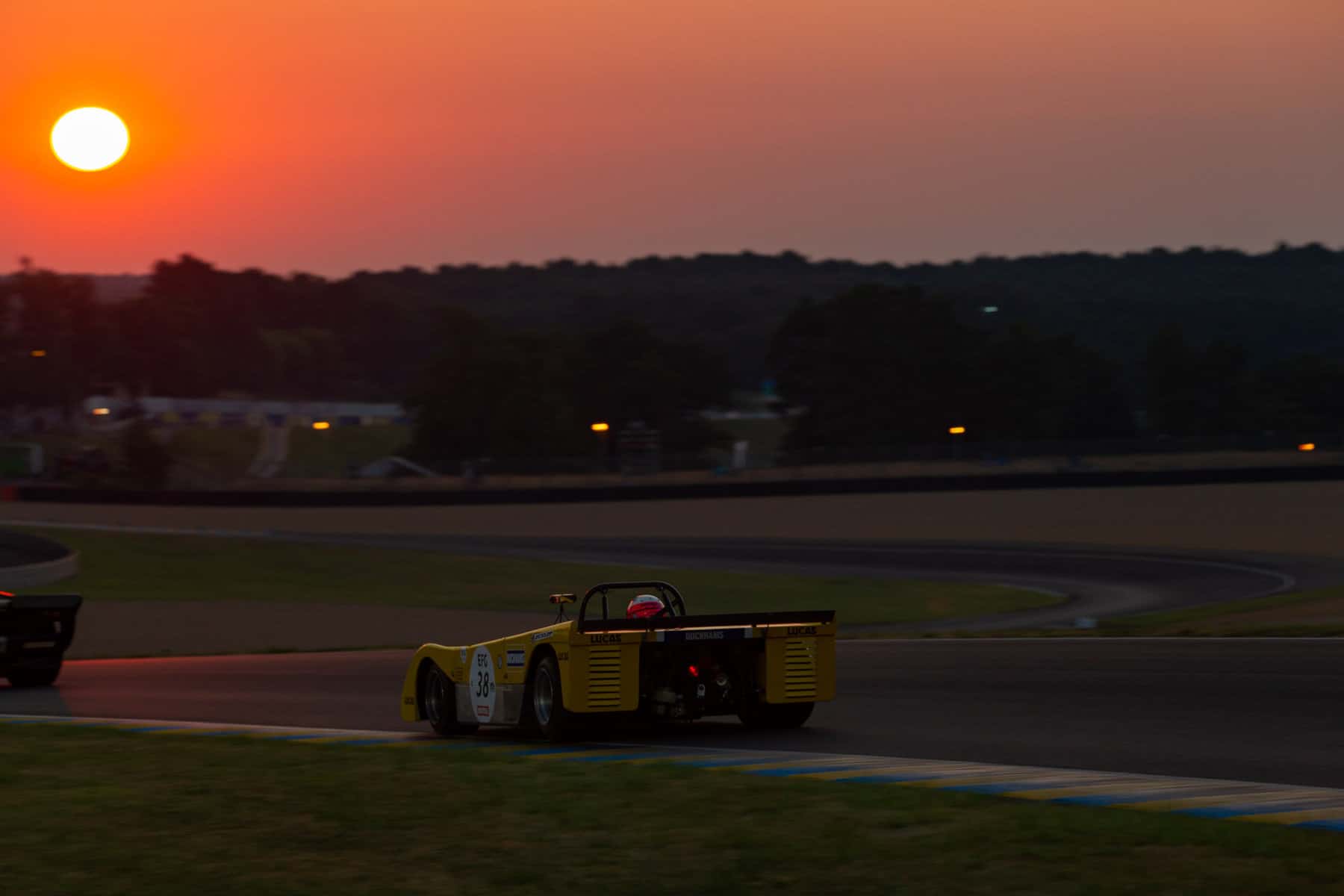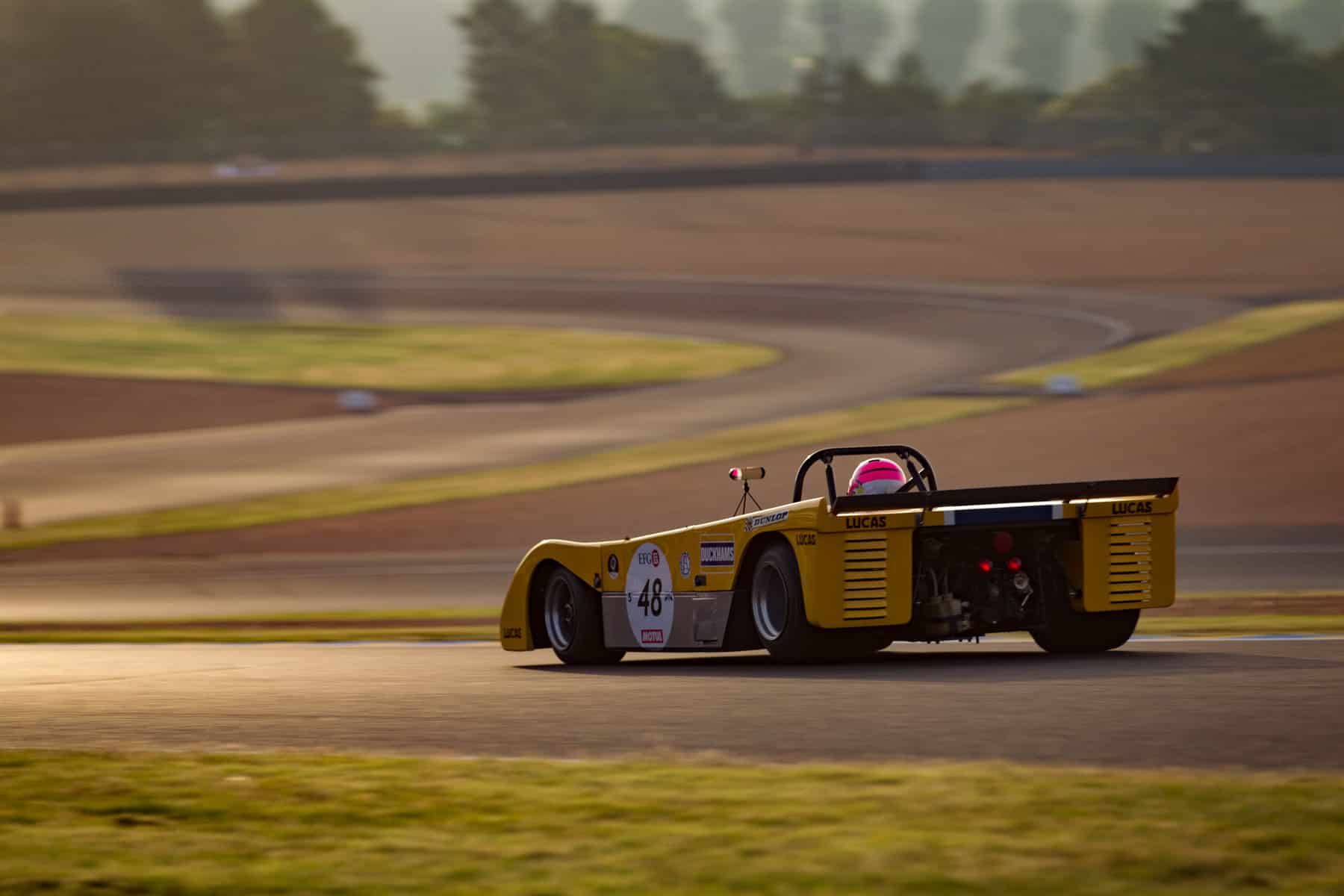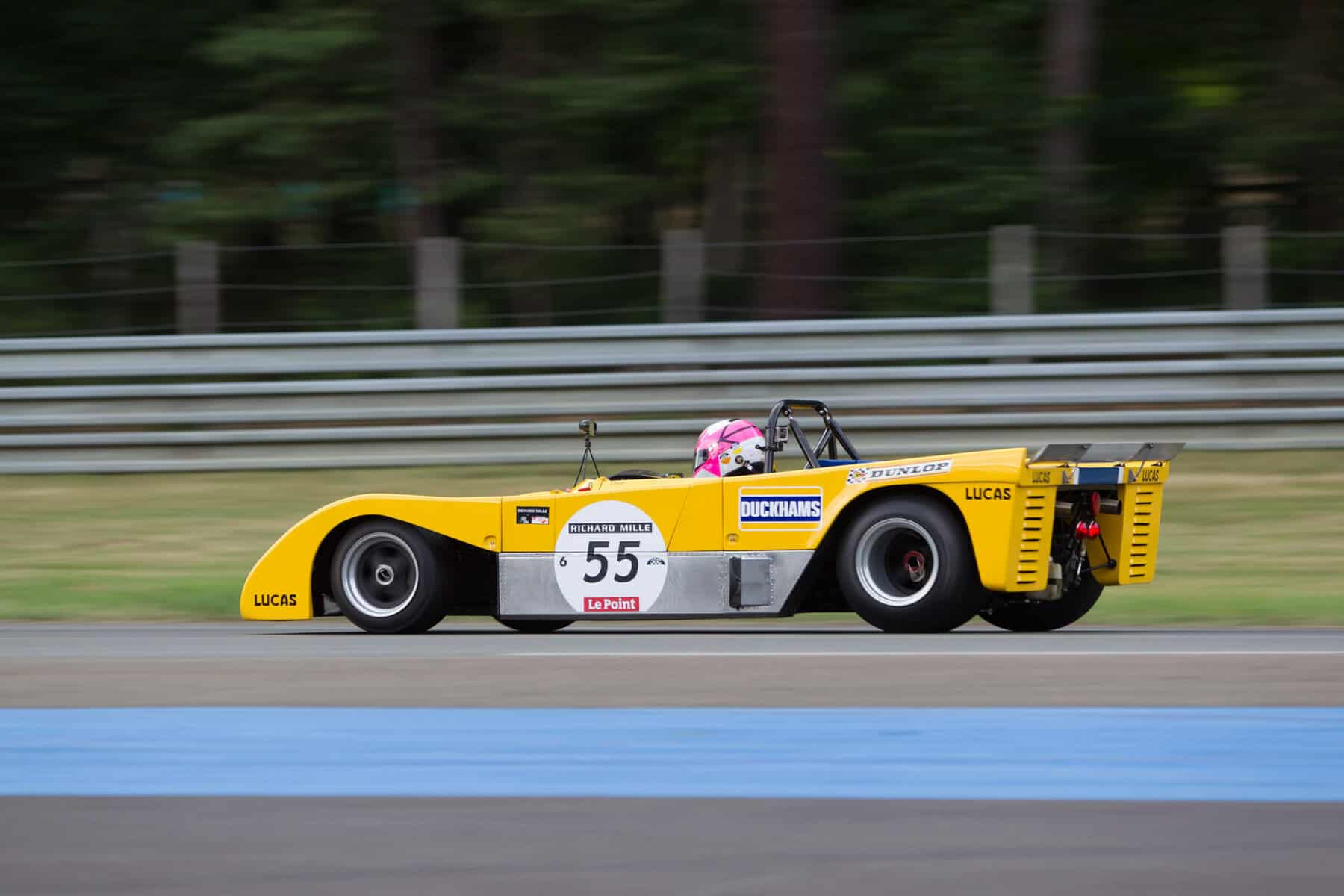Alain de Cadenet and the Duckhams LM
Adieu to a gentleman competitor, and a unique part of Le Mans history
WORDS & IMAGES BY: WOUTER MELISSEN
During the Le Mans Classic, the sad news reached us of the passing of Alain de Cadenet, which was somehow fitting, as he competed in the 24 Hours fourteen times.
He was one of the last great gentleman drivers turned constructors, and later entertained many with his infectious enthusiasm as a broadcaster. This year also marked the fiftieth anniversary of de Cadenet making his debut as an entrant with the home-built Duckhams LM. Designed at night, built using many repurposed components, and powered by an engine first used in 1968, the car performed impeccably, running fourth overall with just one hour to go.
Born to a French father and an English mother, de Cadenet grew up in England. He was educated as a lawyer but never practiced law. Instead, he started his working life as a fashion photographer before being bitten by the racing bug when visiting Brands Hatch to watch a friend race during the mid-1960s. Over the next few years, he bought, sold, and raced numerous cars before finally making it to Le Mans in 1971. He shared an Ecurie Francorchamps Ferrari 512 M with Belgian driver Hughes de Fierlant, but failed to finish due to gearbox issues. That year, he had also won his class in the Daytona 24 Hours with a Ferrari and raced a Lola in the Targa Florio.
For the 1972 season, he set his sights on not only returning to Le Mans but also competing with a chance to win. A significant rule change, cutting the maximum displacement for prototypes to just 3.0 liters, had left the Ferrari he had raced in 1971 obsolete and alternatives were in short supply. De Cadenet explained his predicament in a column for the September issue of Classic and Sportscar Magazine: “Ferrari had been sorting its new open two-seater, the 312 PB, which had the Full Monty flat-12 F1 motor and gearbox…. I’d tried to get my hands on a PB on my last visit to the factory, only to be told that they were far too complicated for private entrants to be run and that was that!”
Porsche’s 3.0-liter 908 was readily available, but that was a four-year-old design. Trying to make the most of his father’s roots, de Cadenet also tried to get a Matra, but the French company did not even bother replying. The only viable, off-the-shelf option was the new Lola T280, which used the Ford Cosworth DFV V8 Formula 1 engine. De Cadenet already had some experience with a DFV-engined sports car, as he had commissioned the one-off 3.0-liter McLaren M8C back in 1970, which Chris Craft raced with considerable success until de Cadenet sold it early in 1971.
When de Cadenet was considering his options for 1972, he also had an old Brabham BT33 Formula 1 car in his workshop “with no hope of getting rid of it either.” At a visit to the Brabham workshop, he met a very young draftsman by the name of Gordon Murray. “He was drawing detail stuff such as uprights and mods to wishbones, but it only took me one trip to the pub to realize that he was something special.” De Cadenet continued: “The ability to explain racing-car behavior in laymen’s terms is given to few people. Gordon Murray had an abundance of this gift, and his drawings were a total work of art in themselves.”
Having secured a sponsorship deal with Duckhams Oil to pay for at least some of the expenses, de Cadenet commissioned Murray to design a bespoke DFV-engined sports prototype using as many of the suspension components of the Brabham BT33 as he could. In true wheeler-dealer fashion, he then sourced the engine at McLaren – the very V8 that had powered Bruce McLaren to victory in the 1968 Belgian Grand Prix. De Cadenet could borrow the engine under the condition that he had a fresh-faced McLaren engineer rebuild it to see if this work could be done in-house. As de Cadenet’s luck would have it, this young engineer was John Nicholson, who would become the foremost preparer of DFV engines for decades to come.
Murray worked during the evenings so as not to interfere with his work at Brabham. He designed a sheet-aluminum monocoque chassis that used the DFV engine and Hewland five-speed gearbox as a fully stressed member. De Cadenet’s trust in Murray was well rewarded: “Everything he drew was made as he designed it…. The most extraordinary thing is that every single item that Gordon drew fitted perfectly.” Carried over from the Brabham were the uprights, stub axles, wheels, hubs, brakes, steering wheel, and rack. The Duckhams LM was clothed in a fiberglass body that was inspired by the Ferrari 312 PB and had a blunt nose and slab sides. At the trailing edge of the car a full-width rear wing was fitted.
In a remarkably short time, the car was designed, components made and then assembled by a very small crew of Mike Barney, Kim Argyll, and John Elliott in de Cadenet’s London workshop. The car was finished in Duckhams colors of yellow with a blue stripe. Further backing had been secured from Camel cigarettes and the car also sported Ford badges. De Cadenet hired the fast and reliable Chris Craft to share the driving duties. He insisted that the car was tested before being shipped to France. There was just time to go to Silverstone and put in a few laps, but legend has it that the car was also given a few outings on the M4 motorway that connects London and Wales.
Initially, the Duckhams LM was on the reserve list, but there were enough cancellations for the small British team to get the green light. Conspicuously missing on the final entry list was the Ferrari works team. They had found that due to excessive oil consumption, the 312 PB was too difficult for a works team to run for 24 hours. The factory efforts that did make it were Matra with four V12-engined cars and Alfa Romeo, represented by three V8-powered Tipo 33s. Ecurie Bonnier fielded a pair of 3.0-liter Lola T280s while the rest of the category was filled with a colorful mix of old Porsche 908s with a variety of bodystyles.
Carefully bedding the car in, the “Duckham’s Oil Motor Racing” team did not go for a lap time during qualifying. As a result, the DFV-engined lined up eleventh on the grid behind all Matras, Alfa Romeos, Lolas, and one Porsche. During the race, steady progress was made and with the finish line beckoning, a sudden downpour caught out Chris Craft at Tertre Rouge. He was lying fourth overall at the time. In the crash, the front bodywork was damaged but Craft made it back to the pits. The car was repaired in time for de Cadenet to complete the final lap and be classified twelfth overall. As a small consolation, the British Racing Drivers’ Club (BRDC) did award the team the Woolf Barnato Trophy for being the first British car home.
Later in the year, the Duckhams was also raced at Watkins Glen, where it did double duty, competing in the World Sports Car Championship and Can-Am races. Sadly, engine issues affected the car during both outings. Fitted with a longer tail and a more substantial wing, the Duckhams was back at Le Mans the following year. A suspension failure put de Cadenent and Craft out of the race in the thirteenth hour. The car was rebodied again for its third and final Le Mans. This time, Craft was joined by engine-builder John Nicholson. Now entered as a de Cadenet, the car was eighth-fastest in qualifying. Sadly, another suspension failure and subsequent crash ended the de Cadenet’s charge with nine hours to go.
For the 1975 season, de Cadenet had commissioned a brand-new Lola, so the old Duckhams was sold off. Like many sports prototypes of the day, it was rebuilt to compete in the popular SuperSaloon and Special GT championships. Fitted with a Volkswagen 1600 fastback-inspired silhouette body, it was raced as the Hawkers DFVW into the 1980s. The car was eventually discovered by Ryan Hodges, who recognized it for what it was despite the original body having been long discarded. During the subsequent restoration projects, he recreated all three bodystyles, but fitted the one raced by de Cadenet and Craft at Le Mans in 1972.
During the second half of the 2000s, the unique Duckhams LM returned to the track, competing in historic events including regular appearances in the Le Mans Classic. In 2012, de Cadenet, Murray, Craft, Barney, and Elliott were all on hand to see the car race on the fortieth anniversary of its debut. In 2018, it was driven to victory in the Plateau 5 by its most recent custodian, Jacques Nicolet, demonstrating that the car is as fast as ever. A great piece of Le Mans racing history, the unique Duckhams LM is today actually for sale with the Ascott Collection in France.
Although it was the third car he designed, Gordon Murray considers the Duckhams to be the car that started it all for him. Among his many other famous creations were World Championship–winning Brabham and McLaren Grand Prix cars and of course the legendary McLaren F1 road car. One of his lesser known but equally impressive designs was the “Rocket” created for the Light Car Company, which was a joint venture between Murray and Chris Craft. To understand how highly Murray rates the Duckhams, he had a second car built recently for his “Heritage Collection.”
De Cadenet would continue to compete at Le Mans on several more occasions with cars bearing his own name. The best result would be a third overall in 1976, and, with Desiré Wilson, he won two World Championship races in 1980. Away from the racetrack, he collected a variety of cars and airplanes. He particularly cherished his 8C 2300 Alfa Romeo, which he regularly raced in historic events. For a broader audience he is probably best known for his television work, which included the Victory by Design series for the Speed Channel. Although there is some foul language, his infectious enthusiasm is wonderfully captured in a clip that can be found on YouTube where he is surprised by a very low pass of a Spitfire fighter plane. One of the all-time great motoring enthusiasts, Alain de Cadenet will be dearly missed.















